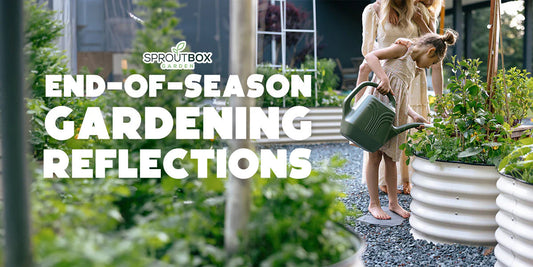The Beginner's Guide to Seed Starting: Grow Strong Plants from Seed

Seed starting is what we all think about when we picture growing a veggie garden for the season. But, more often than not, the process get overly complicated and it leads to frustration and disappointment…
… Unless you know what you’re doing!
Whether you're a seasoned pro or a beginner with a green thumb, mastering the art of seed starting is essential for growing healthy and healthy, thriving plants from the very beginning.
In this comprehensive guide, we'll walk you through the fundamentals of seed starting, from selecting the right seeds to nurturing your seedlings to maturity. Get ready to roll up your sleeves and watch your garden flourish from seed to harvest.
Choosing the Right Seeds:
Before diving into seed starting, it's crucial to choose the right seeds for your garden. Consider factors such as your climate, growing conditions, and personal preferences when selecting seeds. Opt for high-quality seeds from reputable suppliers to ensure successful germination and healthy plant growth.
Supplies You'll Need:
Gather the following supplies to set up your seed starting station:
1. Seed Trays or Containers: Choose trays or containers with drainage holes to prevent waterlogged soil and ensure healthy root development.
2. Seed Starting Mix: Use a lightweight, sterile seed starting mix to provide the ideal growing medium for your seeds.
3. Seeds: Select seeds of your favorite vegetables, herbs, or flowers, ensuring they are suitable for your growing region and season.
4. Labels: Label each tray or container with the name and planting date of the seeds to track their progress.
5. Watering Can or Spray Bottle: Use a gentle watering method to keep the soil evenly moist without disturbing the seeds.
6. Grow Lights or Sunny Windowsill: Provide adequate light for your seedlings to thrive, either with grow lights or by placing them in a sunny windowsill.
7. Heat Mat (Optional): Consider using a heat mat to provide consistent warmth for faster germination, especially for heat-loving crops.
Seed Starting Process:
Follow these steps to start your seeds successfully:
1. Prepare Containers: Fill seed trays or containers with seed starting mix, leaving a small gap at the top for watering.
2. Plant Seeds: Sow seeds according to the recommended depth on the seed packet, covering them lightly with soil.
3. Water Gently: Use a watering can or spray bottle to moisten the soil evenly without disturbing the seeds.
4. Provide Light: Place seed trays or containers in a sunny windowsill or under grow lights to provide adequate light for seed germination.
5. Maintain Moisture: Keep the soil consistently moist but not waterlogged by watering as needed.
6. Monitor Growth: Keep an eye on your seedlings as they emerge, adjusting watering and light levels as necessary to promote healthy growth.
Transplanting Seedlings:
Once your seedlings have developed their first true leaves and are sturdy enough to handle, it's time to transplant them into larger containers or into the garden. Harden off seedlings by gradually exposing them to outdoor conditions before transplanting to reduce transplant shock.
Troubleshooting Tips:
-
Damping Off: Prevent damping off disease by ensuring proper air circulation, avoiding overwatering, and using sterile seed starting mix.
-
Leggy Seedlings: Provide adequate light to prevent seedlings from becoming leggy or stretching towards light sources.
-
Thinning Seedlings: Thin out crowded seedlings to give each plant enough space to grow and develop properly.
Seed starting is a rewarding and fulfilling experience that allows you to witness the entire lifecycle of your plants, from seed to harvest. By following the steps outlined in this beginner's guide, you'll be well-equipped to grow strong and healthy plants from seed, setting the stage for a successful gardening season ahead. So, grab your seeds, roll up your sleeves, and let the journey of seed starting begin!



